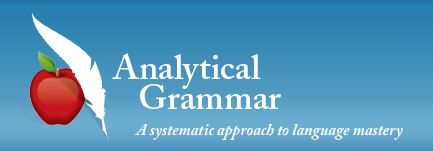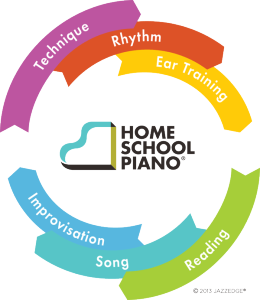
Some time ago I had the opportunity to review Hewitt Homeschooling's 7th Grade Lightning Literature program, so I was delighted to see they were, again, giving us the opportunity to review some of their materials.
This year I was selected to review Hewitt Homeschooling's Lightning Literature and Composition: British Early-Mid 19th Century Student's Guide, which also came with Lightning Literature and Composition: British Early-Mid Teacher's Guide.
I have to admit that I came into this review with a positive bias, because I have seen their materials before and have liked what I have seen.
The Lightning Literature and Composition: British Early-Mid 19th Century course says on its cover that it is for Grades 9-12, although it might be best to wait to 10th grade to introduce this particular course. The student's guide is a softcover book, about 9" X 12", that is broken down into four units, containing two lessons per unit.
The content of British Mid-Early 19th Century contains the following:
Unit 1
Lesson 1: William Blake (poetry provided)
Literary Lesson: Tone
Lesson 2: Jane Austen (Pride and Prejudice) (you provide your own copy of the novel)
Literary Lesson: Characterization
Perspectives: Romanticism
Unit 2
Lesson 3: Sir Walter Scott (Ivanhoe) (you provide your own copy of the novel)
Literary Lesson: Description
Perspectives: Historical Fiction
Lesson 4: Thomas Carlyle "Essay on Scott" (Essay provided)
Literary Lesson: Persuasive Writing
Unit 3
Lesson 5: The Romantic Poets (poetry provided)
Samuel T. Coleridge, "The Rime of the Ancyent Marienere"
 William Wordsworth, "The Tables Turned," "Daffodils"
William Wordsworth, "The Tables Turned," "Daffodils"George Gordon, Lord Byron, "She Walks in Beauty," "So, We'll go no more a-roving"
Percy Bysshe Shelley, "Ozymandias," "Ode to the West Wind"
Literary Lesson: Imagery and Poetic Language
Lesson 6: Mary Shelley (Frankenstein) (You provide your own copy of the novel)
Literary Lesson: Setting
Unit 4
Lesson 7: Charlotte Bronte (Jane Eyre) (You provide your own copy of the novel)
Literary Lesson: Person
Lesson 8: William Makepeace Thackeray, Rebecca and Rowena (Short story is provided)
Literary Lesson: Humor
The Student's Guide is 233 pages long. In addition to the content listed above, it includes a very important Introduction, which includes a section on Perspectives, and three Appendices followed by a Bibliography. Appendix A contains Discussion Questions and Project Suggestions; Appendix B contains Additional Reading (I think "optional"), and Appendix C contains schedules for using the material over either one or two semesters. Here is a Sample Chapter.
Each lesson contains discussion questions and writing assignments. I was thankful for the Teacher's Guide -- it contains answers to the discussion questions. I could not answer them all, myself, just from the reading assignment.
I've had other programs that provided the questions but not the answers -- I guess they thought the reader could get the answers from the reading assignment, but some of us can't always. I consider the provided answers to be just as important for learning as the effort to find the answer is! The answers enable you to adjust your thinking if you've come to the wrong answer on your own.
The Teacher's Guide also contains an important introduction, grading tips, schedules, writing exercises, and discussion questions and projects (different questions than the "comprehension" questions). I always appreciate help with grading tips, especially when it comes to grading writing assignments -- I always feel inadequate to grade writing assignments!
Writing skill is very important for the high school student aspiring to go to college. Writing skill has value in many vocations, actually -- not only occupations that require a college degree. The Lightning Literature program's introduction includes a section called "Writing 101" that provides the student with important teaching on various aspects of writing. Lessons include lists of possible writing assignments, and the student is encouraged to write at least one writing assignment for each shorter selection, and two writing assignments for each novel. Writing exercise suggestions include ideas about writing poems of a certain length; focusing on mood or tone in writing poetry or short story or story about an event; writing a paper analyzing tone of a poem;writing dialogues; experimentation with writing in different "person" perspectives; writing a description of a character, a scene from nature... You get the idea: there are a lot of suggestions for types of writing assignments. Each suggested type of writing also has been covered in the Student's Guide to prepare them for the assignment.
The schedules provided are broken down by week, rather than by day (which is a bit of a struggle to my perfectionist self - I want to know what is due day by day). When the student is assigned a section of reading, the questions for that section should be covered before the student moves on to the next section.
Here is part of the schedule for completing this guide over one semester:
Week 1
- Read Introduction to the Lightning Literature guide.
- Read all of Unit 1, Lesson 1 ("William Blake"): Introduction, the poems, the Literary Lesson: Tone.
- Complete the Comprehension Questions.
- If you have trouble understanding any of the poems, rewrite them in prose form
- Choose one exercise from "Writing Exercises" for Unit 1, Lesson 1 and write at least a rough draft of your paper.
- Read the Introduction to Unit 1, Lesson 2 ("Jane Austen").
- Read Volume I (chapters 1-23) of Pride and Prejudice and answer the Comprehension Questions.
- Review and make any necessary revisions to your paper for Unit 1, Lesson 1.
- Read Volume II (chapters 1-19) of Pride and Prejudice and answer the Comprehension Questions.
- Read Volume III, chapters 1-4, of Pride and Prejudice and answer the Comprehension Questions.
- Revision of the writing assignment is included as part of the assignment. Why do kids always think that what they turn in should be considered the completed assignment? I need to work on helping my son understand that the first turn-in is the rough draft; that I will make changes, and that he WILL have to revise the paper and turn it in again.
- The reading assignments go at a very fast pace. I don't know if you have a copy of the book in front of you, but in my book the Week 1 assignment looks like about half the book (even though I think it is actually only about 1/3, based on the fact that the book is spread out over two weeks.
- It is pretty easy to figure out how to split any week's assignments out over two weeks, if the first week you focused on poetry, the 2nd week the novel, the 3rd week the Volume 2 assignment bullet, and Week 4 the last assignment. Looking at the provided 1-year schedule, that is, in fact, almost how they do it, but they also include part of the novel in week 1.
That Appendix B -- Additional Reading... If you are spreading the program out over two semesters, it is suggested that you might require additional reading, or if your student just wants more you can steer them to these other titles. I just had to laugh inside myself at that -- my son does NOT ask for MORE reading assignments! ;-) Ever.
I really enjoyed reviewing British Early-Mid 19th Century. Even though I have assigned some of these titles to my older students (when they were participating in a literature co-op), I had never read these materials myself -- only seen ALL of them in movie form. (I had read Jane Eyre, though -- one of my favorites!) I was so delighted with my reading of Pride and Prejudice, and was surprised by Ivanhoe (for some reason I had thought it was about Indians, not about knights). I am still looking forward to rereading Jane Eyre, and to digging into Frankenstein! A lot of these classics are available for free on Kindle, you know -- that's the copy that I have in the photograph above.
I don't think Lightning Literature courses are necessarily for everyone, but I really like them. My son is only 9th grade, and now that the review is completed I plan to put this one on the shelf for a year and use something else with him this year. I think he will do better with it when he is a year older. I am not sure what I will use instead, but I know there are some other Lightning Literature titles available that are looking like possibilities.
Lightning Literature British Early-Mid 19th Century Student's Guide sells for $29.95, and the accompanying Teacher's Guide sells for only $2.95! The Teacher's guide is not bound (it is stapled), but it is 3-hole-punched so that you can put it into your notebook.
Thank you for reading my review. Let me know what you think! If you want to read reviews of other Hewitt Homeschool materials by other members of the TOS Review Crew, click the button below.























